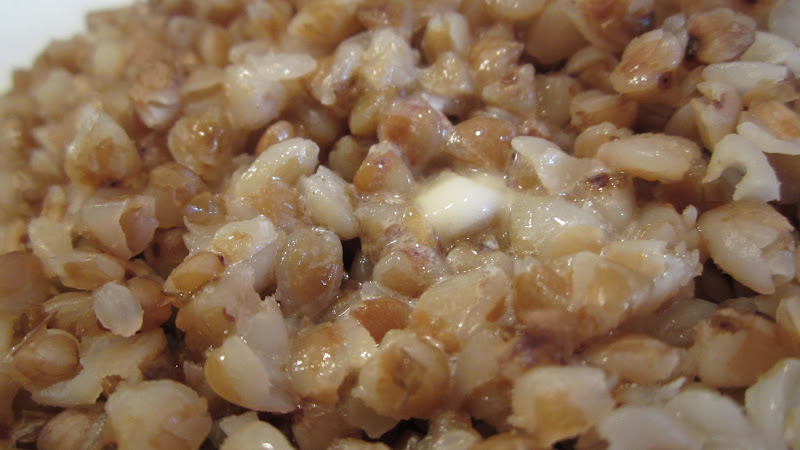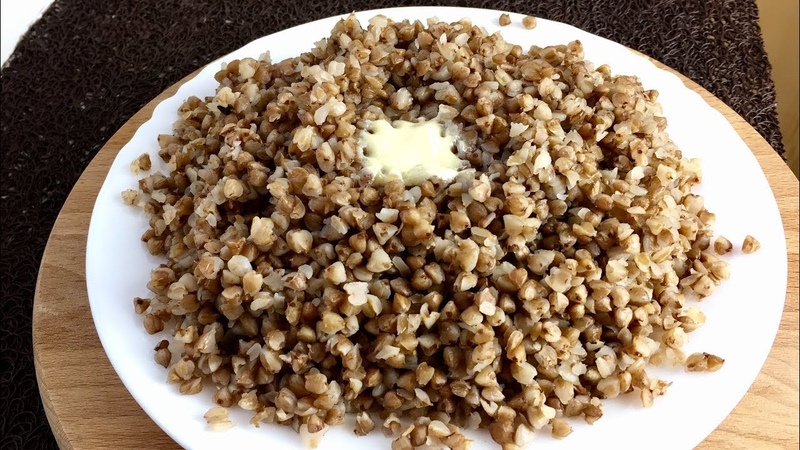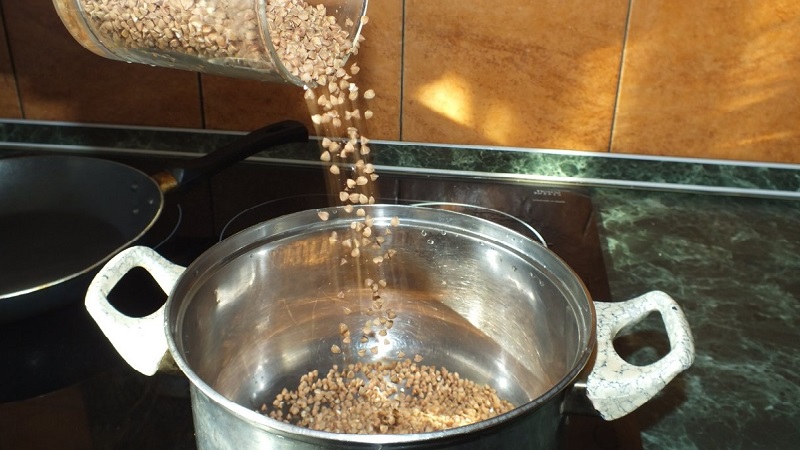Calorie content and BZHU of boiled buckwheat
Many people know that buckwheat is rich in composition and useful for the body, but not everyone realizes that it is one of the most effective dietary products.
Is it possible to lose weight with cereals and is it acceptable to use it every day? What is the indicator of KBZHU of boiled buckwheat and do they overestimate its benefits? Find answers to these and other questions in this article.
The content of the article
Chemical composition and nutritional value of boiled buckwheat per 100 grams
The product has a rich chemical composition. 100 g of buckwheat contains the following vitamins:
- A - 2 μg;
- E - 0.8 mg;
- beta-carotene - 0.01 mg;
- PP - 4.2 mg;
- B1 - 0.43 mg;
- B2 - 0.2 mg;
- B3 - 0.9 mg;
- B4 - 20.1 mg;
- B5 - 0.4 mg;
- B6 - 0.4 mg;
- B9 - 14 mcg.
Minerals useful for the body include:
- boron - 350 mcg;
- iron - 6.7 mg;
- iodine - 3.3 μg;
- potassium - 380 mg;
- calcium - 20 mg;
- cobalt - 3.1 mcg;
- silicon - 81 mg;
- magnesium - 200 mg;
- manganese - 1.56 mg;
- copper - 640 mg;
- sodium - 3 mg;
- nickel - 10.1 mcg;
- selenium - 8.3 mcg;
- sulfur - 88 mg;
- phosphorus - 298 mg;
- fluorine - 23 μg;
- chlorine - 33 mg;
- chromium - 4 mcg;
- zinc - 2.05 mg.
Buckwheat also contains the following plant compounds:
- rutin;
- quercetin;
- vitexin;
- D-chiroinositol.
Glycemic index and KBZhU of buckwheat, boiled in water

Calorie content dry product - 308 kcal per 100 g, however, during the cooking process, the energy value of buckwheat decreases - 90 kcal per 100 g.
If there is no kitchen scale, calorie content is measured using cutlery. So, in 1 tbsp. l. - 77 kcal (per 25 g), and in a tea house - 25 kcal (per 8 g). In 1 st. (250 ml) - 210 g of buckwheat, which means that the calorie content of the finished dish is 190 kcal.
Attention! The calorie content and ratio of BZHU depends on the method of preparation of the product.
If porridge cooked on water without salt, its calorie content is 90 kcal, with salt - 103 kcal. And the calorie content of porridge cooked in milk will be 200 kcal.
BZHU of buckwheat boiled in water:
- proteins - 3.4;
- fats - 0.6 g;
- carbohydrates - 19.9 g;
- fiber - 0.3 g
In 100 g of buckwheat boiled in water, despite its low calorie content, it contains 16% proteins, 3% fats and 24% carbohydrates.
The glycemic index of buckwheat is 40-50 units.
Attention! The product has a low glycemic index. This means that the use of porridge does not cause drops in blood sugar, and soluble carbohydrates in the composition, on the contrary, contribute to its decrease after eating.
Beneficial features
Groats have a lot of useful properties:
- improves metabolism and normalizes metabolic processes;
- removes toxins from the body;
- improves the functioning of the gastrointestinal tract;
- stabilizes blood sugar levels;
- helps to reduce bad cholesterol;
- has a positive effect on the nervous system (relieves anxiety and depression), improves memory and brain function;
- strengthens the cardiovascular and immune systems;
- stabilizes hemoglobin in the blood (helps in the treatment of anemia);
- antioxidants in buckwheat porridge improve the condition of hair, skin and nails;
- prevents the development of varicose veins;
- improves hormonal levels;
- maintains physical activity, increases endurance;
- the use of buckwheat during pregnancy reduces the risk of developing pathologies;
- has a beneficial effect on the liver;
- folic acid normalizes the genitourinary system.
Features of using buckwheat on a diet

Buckwheat porridge is one of the most common foods used in dietary nutrition.Due to the high content of dietary fiber, amino acids, antioxidants and carbohydrates, buckwheat promotes losing weight.
Is it possible to lose weight on buckwheat
Buckwheat diet, with the right approach, promotes weight loss, and also has a beneficial effect on the body as a whole.
Features of buckwheat diet:
- carbohydrates are broken down slowly, and the body spends a lot of energy on their digestion;
- high calorie content gives a feeling of satiety and eliminates exhaustion;
- buckwheat cleans the walls of the stomach, improves digestion and dissolves visceral fat;
- speeds up metabolism, due to which a person loses excess weight:
- removes excess water and toxins.
There are a variety of buckwheat-based diets:
- by timing: 3-day, weekly, 2-week;
- by products: chicken, vegetable, dairy, apple;
- on water and buckwheat (used as a fasting day);
- medical;
- strict;
- lightweight.
Most often, buckwheat is used during a mono-diet, but sometimes those who want to lose weight add vegetables and dairy products to the diet. Thanks to this method, it is possible to lose up to 10 kg in 2 weeks, subject to physical activity and maintaining water balance.
Diet recommendations:
- drink water - about 30-40 ml per 1 kg of body weight;
- do not eat 5 hours before bedtime;
- it is better to steam buckwheat - this way it retains more nutrients;
- with a strong feeling of hunger, drink 1 tbsp. kefir or eat an apple;
- instead of caffeine, which retains water in the body, drink herbal teas.
An example of a buckwheat mono-diet:
- in the morning drink 1 tbsp. water;
- after half an hour, eat a portion of porridge, steamed with boiling water;
- for lunch - steamed buckwheat with green vegetables;
- for dinner - a portion of buckwheat porridge;
- drink water during breaks.
The maximum duration of a buckwheat diet is 2 weeks. The best option is 5-7 days once every 6 months. At the same time, do light sports, get enough sleep and drink more water.
Contraindications for buckwheat diet
Despite the beneficial properties of the product, if the diet is not followed correctly, health problems can arise.
This weight loss option has its drawbacks:
- lowering pressure;
- headache;
- fast fatiguability;
- mood swings.
It is necessary to follow the diet with caution for people who:
- diseases of the gastrointestinal tract;
- diabetes;
- oncology;
- metabolic problems;
- heart diseases;
- individual intolerance;
- kidney disease.

What will happen if there is only buckwheat every day
According to doctors and nutritionists, daily use of buckwheat will not harm if consumed with dairy products, vegetables, and fruits. Due to the high calorie content, the body will be provided with a sufficient amount of energy, and the feeling of hunger will occur less often.
Such a diet will provide the body with all the necessary minerals, amino acids, antioxidants. To maintain health, it is recommended to alternate buckwheat with other cereals and cereals.
Important! The daily daily rate of buckwheat with proper nutrition is 150-200 g.
Conclusion
Thanks to its beneficial properties, buckwheat has become one of the main products in the human diet. To get the most out of it, it is supplemented with vegetables, fruits, meat, fish and dairy products. The buckwheat diet has a number of contraindications, so consult your doctor before using it.